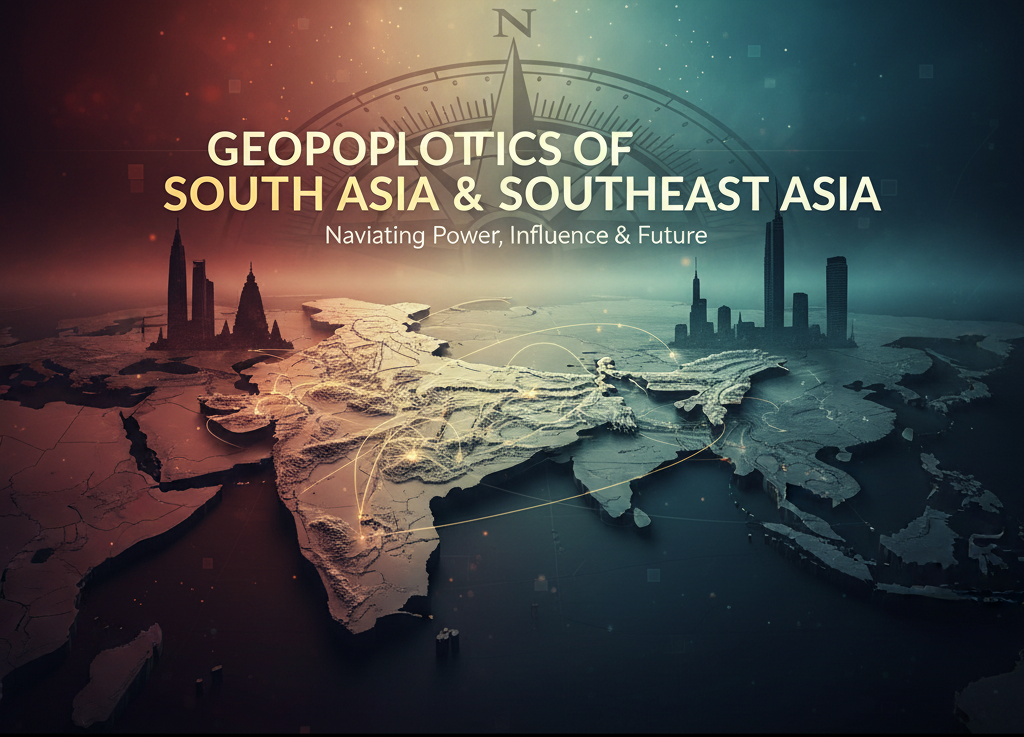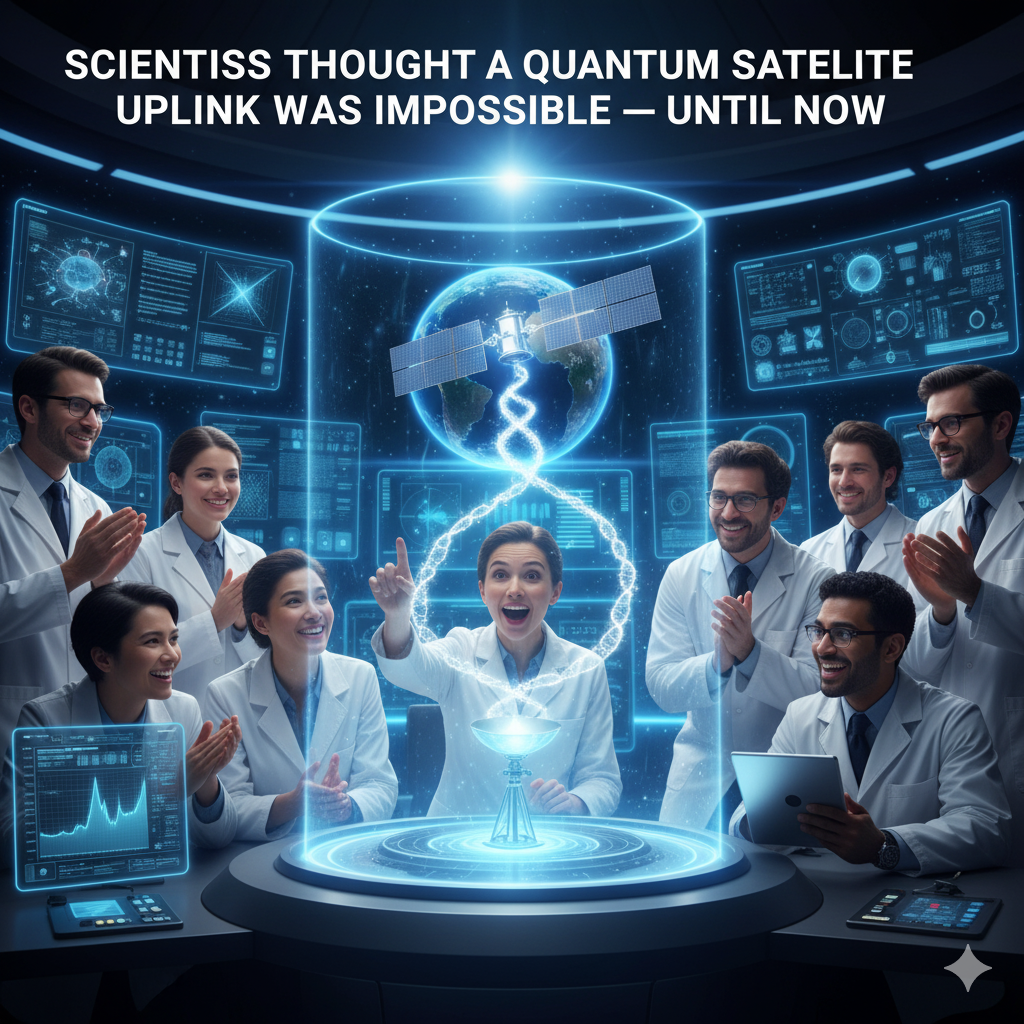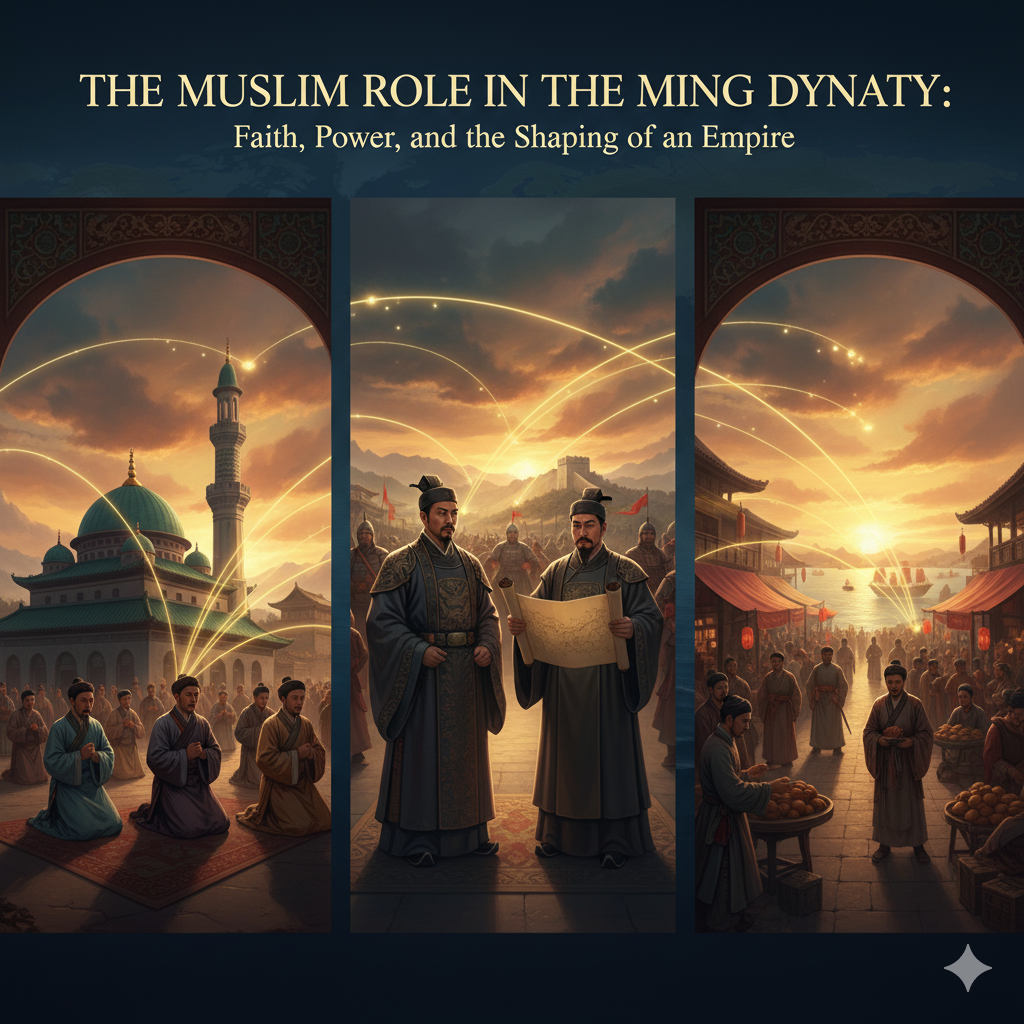At the dawn of the 15th century, when much of Europe still clung to the edges of its coastlines, a different kind of maritime age was already unfolding in the East.
The Ming Dynasty (1368–1644), newly risen from the ashes of Mongol rule, launched one of the greatest naval enterprises in human history — a series of expeditions that reached the farthest shores of the known world.
At the heart of this golden maritime era were not just ships and emperors, but Muslim navigators, shipbuilders, and scholars, whose faith and science made the oceans navigable.
This is the story of how Islam, science, and Chinese ambition converged on the waves — and how the stars that guided these sailors still shine on the map of world history.
🌊 The Rise of China’s Maritime Empire
The Ming maritime era began under the visionary leadership of Emperor Yongle (r. 1402–1424), a ruler whose ambitions extended beyond land.
He envisioned a China that would not only dominate its continental frontiers but also command the oceans. To achieve this, he commissioned a fleet unlike anything the world had ever seen — hundreds of ships, thousands of sailors, and an admiral who could embody both the empire’s strength and its diplomacy.
That admiral was Zheng He (Ma He) — a Hui Muslim from Yunnan, captured as a child and raised within the imperial court.
Educated, loyal, and brilliant, he rose to become the Ming Empire’s supreme maritime commander. His faith, discipline, and multicultural perspective made him the perfect emissary for an empire eager to connect with distant lands.
Between 1405 and 1433, Zheng He led seven epic voyages across the Indian Ocean, commanding fleets of over 300 ships and nearly 28,000 men.
From Southeast Asia to India, Arabia, and the coasts of East Africa, his expeditions carried not war but wonder — gifts, scholars, envoys, and the message of Ming China’s greatness.
Behind these voyages stood a network of Muslim navigators and scholars, whose understanding of the sea turned imperial vision into reality.
🧭 Muslim Navigation – The Science Behind the Sails
For centuries before the Ming era, Muslim navigators had been the masters of the Indian Ocean.
Their knowledge of astronomy, wind patterns, and cartography had linked the ports of Arabia, India, and Africa long before European ships ventured into those waters.
This scientific tradition flowed naturally into the Ming court through generations of Chinese Muslims — the Hui — who inherited both Islamic scholarship and Chinese technical craftsmanship.
Muslim navigators in the Ming fleet used:
- Astrolabes to calculate latitude by observing the height of stars.
- Magnetic compasses, perfected in China but calibrated using Islamic astronomical data.
- Star charts and lunar tables developed from Arabic works like Al-Zij al-Sultani and Kitab al-Qanun al-Mas’udi.
- Maritime maps (Daqin charts), which recorded sea routes from the Red Sea to Java.
They understood monsoon wind cycles, enabling the fleet to time its journeys between East Africa and China with astonishing accuracy — centuries before the West mastered such navigation.
These tools were not mere instruments; they were embodiments of faith and mathematics.
For Muslim sailors, reading the stars was an act of devotion — each constellation a reminder of divine order, each successful voyage an affirmation of harmony between knowledge and belief.
⚓ The Muslim Seafarers of the Ming Fleet
Zheng He’s voyages were multicultural enterprises, blending Chinese organization with Islamic navigation and diplomacy.
The fleets included Muslim captains, interpreters, cartographers, and doctors, many of whom came from Hui communities in Yunnan, Quanzhou, and Guangzhou, or from foreign Muslim ports like Malacca and Calicut.
These sailors formed the Ming Empire’s intellectual backbone at sea:
- Muslim cartographers produced maps that linked the Indian Ocean with the South China Sea.
- Muslim interpreters served as cultural mediators with rulers in Calicut, Hormuz, and Aden.
- Muslim physicians and herbalists treated illnesses with knowledge inherited from Avicenna’s Canon of Medicine.
- Muslim merchants helped establish the Ming tribute system, exchanging silk and porcelain for spices, pearls, and precious metals.
It was this multicultural crew that allowed Zheng He to navigate not just geography, but diplomacy — forging peace through understanding rather than domination.
🕌 Faith on the High Seas
Zheng He’s voyages were not only imperial missions; they were spiritual journeys.
Though he sailed under the dragon flag of the Ming Emperor, he remained a devout Muslim throughout his life. Historical inscriptions suggest that Zheng He built mosques in China and abroad — in Chittagong (Bangladesh), Semarang (Indonesia), and Nanjing, where one still bears his name: the Jingjue Mosque.
He often stopped to pray at sea, and his fleets observed both Chinese and Islamic customs — respecting the Emperor’s authority while honoring divine law.
This balance of faith and duty made Zheng He not just a servant of empire but a servant of humanity — a man who believed that peace and prosperity were God’s will for the world.
His voyages carried not missionaries but messengers; not swords but scrolls.
Through trade, cultural exchange, and diplomacy, Zheng He and his Muslim officers spread knowledge instead of empire.
🌍 The Indian Ocean Network – A Muslim-Chinese Partnership
The success of the Ming maritime project rested on centuries of Muslim infrastructure across the Indian Ocean.
Ports like Malacca, Calicut, Aden, and Malindi were already thriving Muslim centers of trade and scholarship. Zheng He’s fleets were welcomed not as strangers but as brothers in faith and commerce.
This shared spiritual and commercial identity allowed the Ming fleet to integrate seamlessly into global networks stretching from East Africa to the Persian Gulf.
The fleets exchanged Chinese silk, porcelain, and jade for African ivory, Indian spices, and Arabian horses — enriching both sides of the trade.
In a sense, the Ming expeditions represented the first globalized partnership between civilizations — an early prototype of peaceful international cooperation grounded in mutual respect.
🔭 Scientific Exchange and Global Impact
The Muslim navigators of the Ming era didn’t just sail — they measured, recorded, and mapped.
Their maritime logs documented coastal landmarks, wind directions, currents, and astronomical positions — data that later influenced both Chinese and global geography.
Through the interaction of Chinese and Muslim scholars, new forms of knowledge emerged:
- Advanced celestial navigation methods that combined Islamic astronomy with Chinese instruments.
- Improved ship designs — multi-decked, compartmentalized vessels that could withstand long voyages.
- New maritime charts that laid the groundwork for later Asian trade routes.
In this way, the Ming fleet became the university of the seas, where cultures met to learn from each other under the guidance of Muslim science.
⚓ Decline and Rediscovery
After Zheng He’s death around 1433, the Ming court turned inward.
Isolationist scholars at court deemed the voyages wasteful, and China’s great shipyards fell silent.
The maps and navigational data painstakingly gathered by Muslim and Chinese mariners were archived, lost, or destroyed.
As Europe entered its so-called “Age of Discovery,” China withdrew from the oceans it had once ruled.
But even as Zheng He’s name faded from official records, his memory lived on — in Southeast Asian mosques, African oral traditions, and the chronicles of Arab traders who wrote of “the Great Chinese Admiral.”
In the 20th century, historians rediscovered his story, realizing that long before Columbus crossed the Atlantic, Zheng He’s Muslim-led fleets had already connected three continents through trade, technology, and trust.
🌠 Legacy – When Science Sailed with Faith
The Ming Maritime Era stands as one of history’s greatest proofs that science, faith, and diplomacy can coexist.
It was an age where Muslim navigators read the stars with reverence, where Chinese emperors valued curiosity over conquest, and where the ocean was not a boundary but a bridge.
Their voyages reshaped the geography of human connection.
They carried no empire of religion, only the universal language of knowledge and respect.
In the shadow of history’s later wars of exploration, Zheng He’s fleet remains a reminder that the sea can be a path of peaceful power — that leadership guided by wisdom and faith can unite worlds, not divide them.
“To cross the ocean is to know that the world has no edge — only endless horizons.”
— Inscription attributed to Zheng He, Nanjing, 1432










